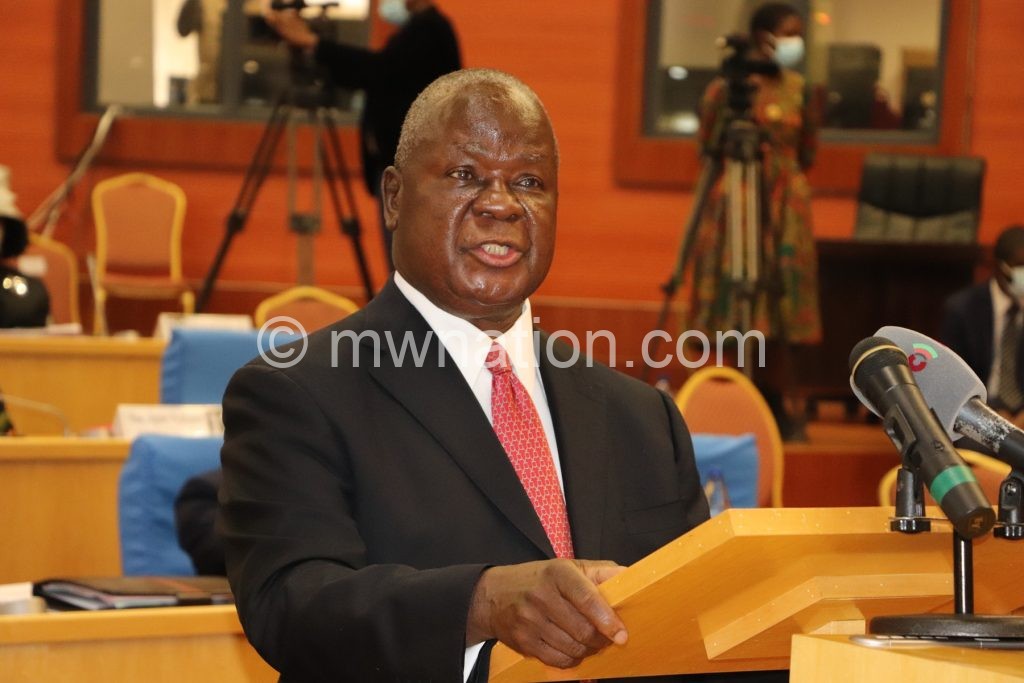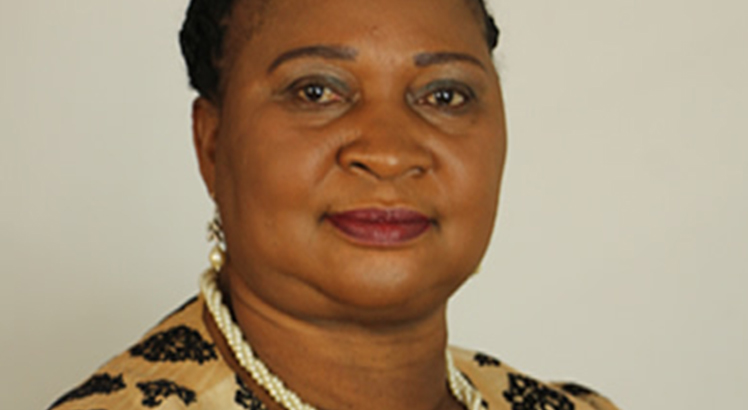Tonse budget Goes rogue
It has emerged that Ministry of Finance spent K635.1 billion between July and October 2020 amid less revenue collection of K471.8 billion during the period.
This development left Treasury with the option to borrow K163.3 billion from the expensive domestic market to finance the deficit.
The Nation analysis of the government expenditure shows that between July and October 2020, Capital Hill on average spent K159 billion a month against the average monthly revenue collection of K118 billion. spent K159 billion a month against
The development means that within four months, the Tonse Alliance administration spent roughly one third or 29 percent of the K2.2 trillion first substantive national budget some economic analysts christened as ambitious soon after Minister of Finance Felix Mlusu had presented it in Parliament on September 11 2020.

The picture appears bleak as it means that with K635.1 billion spent within the first four months of the 2020/21 National Budget, government has already consumed half of the projected domestic revenue for the year pegged at K1.2 trillion.
This trend does also not augur well with the situation on the
ground where monthly average domestic revenues have shrunk by 11 percent, lower than the pre-Covid-19 period, according to figures by Treasury.
In September 2020, central government revenue collection declined by 0.6 percent from August 2020 to K102.7 billion while in contrast, government expenditure grew by 14 percent to K125.6 billion, creating a fiscal deficit of K22.9 billion.
In the first quarter of 2019/20, out of the projected domestic revenue of K1.425 trillion, actual domestic revenue collection at the end of the year was K1.226 trillion, representing an underperformance of about 14 percent.
Mirroring the same trajectory, our examination of revenue pattern so far which has been corroborated by the country’s largest multilateral lender, the World Bank, also point to a difficult journey covered so far in the first quarter of 2020/21 where domestic revenue performed below the previous two financial years.
The World Bank reveals that in percentage terms, that domestic revenue—which comprises tax and non-tax revenue—totalled 4.1 percent of gross domestic product (GDP) for the first quarter, below the target of 4.7 percent of GDP.
In a virtual presentation of the 12th edition of the Malawi Economic Monitor (MEM) on Tuesday, World Bank senior country economist for Malawi Patrick Hettinger said: “Despite anticipating an improvement in performance, tax revenue for the first quarter is below performance for the similar period in the previous two fiscal years.
“It totalled 3.8 percent of GDP, lower than 4.5 and 4.0 percent of GDP in the first quarter of 2018/19 and 2019/20, respectively.”
He said non-tax revenue, on the other hand, totalled 0.3 percent of GDP in the first quarter with similar underperforming first quarters of the previous two fiscal years at 0.4 of GDP in 2018/19 and 0.7 percent of GDP in 2019/20.
From an expenditure point of view, Hettinger said recurrent expenditure is budgeted to slightly increase from 24.8 to 24.9 percent of GDP between 2019/20 and 2020/21, largely attributing such an increase to the introduction of Tonse Alliance government’s flagship subsidy programme, Affordable Inputs Programme (AIP) which replaces the Farm Inputs Subsidy Programme (Fisp).
The AIP—which has ignited a flurry of criticisms from various traditional donors—has increased beneficiaries from 900 000 to 4.2 million while reducing the price of fertiliser paid by smallholder farmers to K4495 per 50 kilogramme bag. The programme has increased the subsidy component payable by the government.
In the 2020/21 National Budget,
government has quadrupled the allocation towards subsidy programme to K160 billion, from an allocation of K36 billion to Fisp in the in the 2019/20 budget. government has quadrupled
At K160 billion, AIP dominates the overall agricultural budget, taking up about 45 percent of the agriculture, water development and climate change budget at K354.8 billion, prompting donors, including the World Bank to cast doubt over the sustainability of the programme amid a squeezed fiscal space.
In that context, expenditure on agricultural inputs subsidies alone is projected to increase from 0.6 to 2.4 percent of GDP between 2019/20 and 2020/21, at a time when the budget deficit in the 2020/21 budget is already yawning at K755 billion—a worst gap between revenue and expenditure in history of the country, in nominal terms.
The four months revenue and expenditure pattern so far has prompted Economics Association of Malawi (Ecama) president Lauryn Nyasulu to conclude that the biggest challenge the economy has right now is on the fiscal side.
In an interview yesterday, she said: “Government needs sustainable fiscal planning and stronger accountability measures to strengthen expenditure management.
“With very limited fiscal space, expenditure prioritisation on domestic resources are key. Malawi is at risk of overall debt distress due to high levels of domestic debt contracted at high interest rates.
“Unfortunately, the fiscal deficits between July and October, indicate that more pressure for domestic borrowing is being exerted on the domestic market. This further reduces the fiscal space and crowds out private investments.”
Nyasulu said there is need for some expenditure adjustments during the Mid-Year Budget Review in Parliament early next year to make some near-realistic revenue projections.
Exacerbating the already fragile fiscal room, Treasury has also currently intensified its over-reliance on long-term treasury notes (T-notes) when borrowing domestically, a trend which many
financial market analysts we spoke to fear is poised to increase the debt servicing burden for domestic debt.
Domestic debt alone is currently seen at $2.39 billion (about K1.8 trillion).
Overall, total public debt (TPD), stands at K4.1 trillion, representing 65 percent of GDP (as at end June 2020) and is an increase of K458 billion over the same statistic a year earlier.
Of the TPD stock, K2.37 trillion (or 57 percent) are domestic debt while $2.39 billion (about K1.8 trillion) are external debt.
The four months budget underperformance has also vindicated economist Milward Tobias, an executive director of Centre for Research and Consultancy, who earlier expressed skepticism on the budget macroeconomic framework as a whole.
He said in an interview yesterday: “This is not unexpected. We have said time and again that the budget lacks credibility.
“The revenue target is unrealistic. The result of this is either high borrowing than planned or continued accumulation of payment arrears.
“The former is detrimental to macroeconomic stability and the latter stifles private sector capacity to grow and create jobs.”
Mlusu has since admitted that all has not been rosy at Treasury when it comes to revenue and expenditure trajectory in the first four months of the 2020/21 budget implementation.
During the new administration’s first dialogue with the European Union (EU) on Wednesday, the minister said a closer look at the Malawi budget clearly indicated it is skewed towards statutory expenditures, namely the wages and salaries, interest payments and pensions.
He said the three account for closer to 80 percent of the country’s total expenses.
Mlusu said: “During the current fiscal year, the situation has not been helped by the significant drop in domestic revenues due to the adverse impact of the pandemic [Covid-19] on economic activity.”
But the minister justified the K163 billion deficit incurred between July and October 2020.
Th e To n s e A l l i a n c e administration, led by President Lazarus Chakwera of Malawi Congress Party, was ushered into office through the court-sanctioned fresh presidential election held on June 23 2020.





